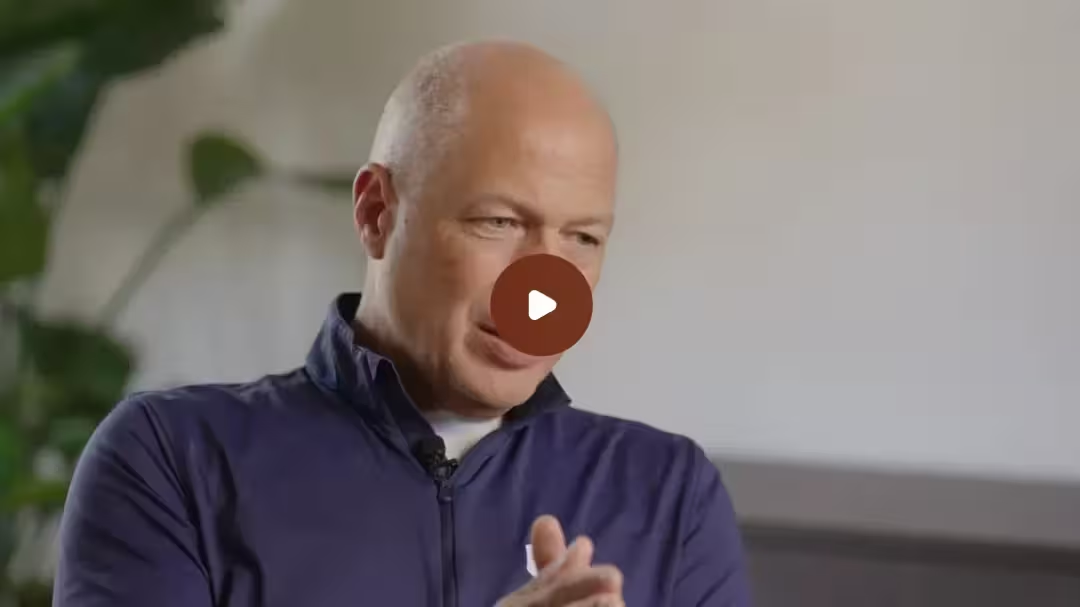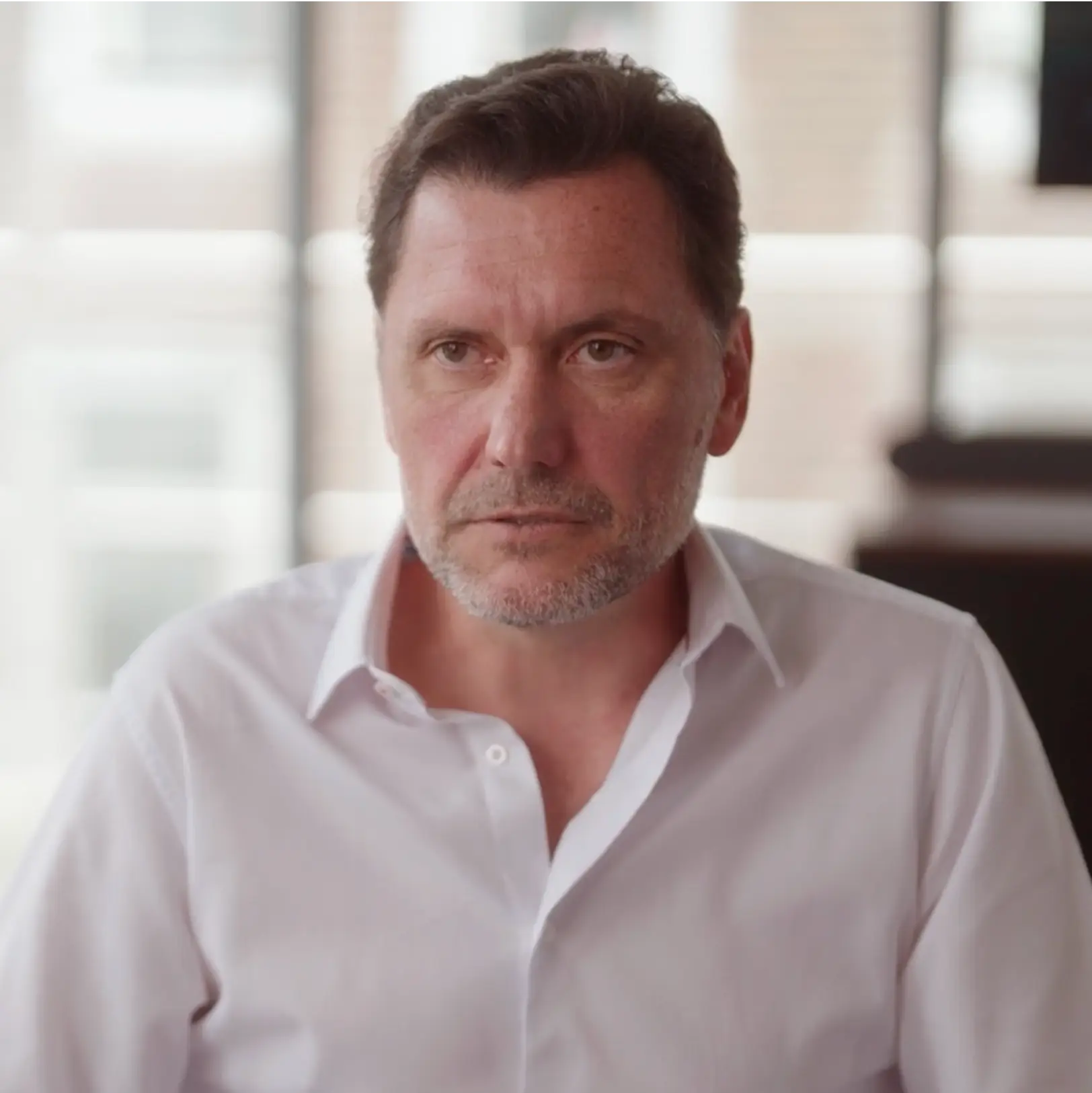The Interview
Kluster's Take
Josephine spoke with Joe Marcin, Chief Revenue Officer at Kyriba. He explains his thorough approach to forecasting.
Joe uses several different forecasting methodologies. This is to inspect for triangulation, providing a scientific view. He uses forecast categories to determine where a deal might sit in a given quarter and its risk profile.
When it comes to data, he uses statistical information about historical performance. He also references current data and signals from sellers and buyers. The purpose is to understand variance and the risk profile of a given financial period.
Kyriba has created a culture centered around honoring commitments. Every member of the team is held accountable to the forecast.
Transcription
We've set a culture in this organization. That's very much centered around honoring our commitments. We hold every member of the team accountable to the forecast.
Over the last 20 years, I think the, um, pressure around forecasting has increased significantly, largely driven by, um, um, by the computing transformation to cloud and the introduction of the subscription model under software as a service or. Um, companies now have a need to be much more precise on not only the forecasting of bookings and top line growth, uh, but also overall revenue.
Um, and so the pressure around that I think has continued to, um, to increase in elevate. Um, I think the, uh, the need to be able to do that at a higher frequency, um, because of the nature of cloud has also, um, created more pressure. So organizations best-in-class organizations have, have made that shift, um, and are no longer looking at annual or quarterly forecasts, but truly looking at, um, you know, month monthly forecasts and managing each month as a, um, as a previous quarter.
Awesome. Okay. And we were talking before about how. Forecasting has basically changed and evolved and that's because of cloud evolving as well. Could you talk me through that really quickly? Sure. Yeah. I think the democratization of data, um, and the accessibility of technology through CRM systems, order management systems, um, and everything that's happening from, uh, from.
Buyer's perspective online has enabled us to be able to look at many more signals that can be indicative of where a buyer is in their journey and give us more accuracy around the forecasting of a given pursuit. Um, so the accessibility of all of this has ultimately created inputs into. Forecasting algorithms that would allow us to identify behavioral trends are indicative of, um, of, of sales that are about to occur.
Um, because the, um, the volume of data that's accessible to us now, um, has increased exponentially. Um, over the last few years, we now have the ability to use that data. Do I have a very scientific view around, um, how behavioral, um, signals are ultimately driving, um, the outcomes that we're pursuing on given I'm given opportunities that are built into the forecast.
That reminds me of a quote I came across before, which is like data is the new code. See, it makes a lot of sense. Okay. I'd be really interested to hear about. I think that's what forecasting methods are you using and why? Sure. Um, we actually use, um, uh, several different forecasting methodologies. And the reason for that is we look for triangulation.
Um, so we're, we're using, um, forecast categories to help us, um, um, you know, determine where, um, a given deal might sit in a given quarter. Um, and what the risk profile of that deal is. Um, we use, um, weighted and unweighted views of the pipe, uh, of the pipeline to be able to determine. Where a given pursuit is, um, in the scoring of that pursuit on, based on the criteria we're using to move, um, move opportunities through the sales process.
And then we're all using, as I talked about data, we're using statistical information about historical performance, uh, but also current data and the signals that we're receiving from sellers and buyers to be able to predict outcomes. So we use all of that to triangulate. In addition to having a multi-level forecasting methodology.
So that we can best assess, um, where there's variance and use that variance in order to determine the risk profile on a given, uh, given financial period. Awesome. Okay. And you sound like you have a very complex system who do thinks responsible for that forecast number given up and on the flip side, who's been in the firing line.
Things are going wrong if it's misleading. Sure. Um, ultimately, um, we're all, uh, we're all responsible for it. Um, and when I say that it's every sales athlete on the team, every coach that's part of my team and myself. Um, but it's also the company. Um, we ultimately. All are responsible for making sure that we can perform against the growth numbers that we have and play a role in that.
So whether you're in professional services, customer success support on the product team. All of us who are interfacing with customers have an input that can be leveraged, child determined. Um, the, the, um, the forecast and how realistic that forecast is. So we're all ultimately accountable. Um, and I, I try to make sure that my teams understand that the precision in their forecast is important, which is reinforced through their compensation plans.
So we do have elements of their compensation tied to their ability to forecast accurately. Um, it's, it's, we don't need heroes on the team who are, you know, bringing, bringing large deals forward. Um, on the last day of the quarter that Noah knew about. Um, and we also don't need people who are, you know, painting a very rosy picture and unable to deliver on the commitment.
So we've set a culture in this organization. That's very much centered around honoring our commitments and we hold, we hold every member of the team accountable to the. Awesome. Okay. So is that a way for you to ensure your forecasts have integrity? Like as it passes through the layers, I can imagine, you know, it's going through so many different peoples hadn't set, you're compensating them correctly.
It promotes that behavior like trying to forecast accuracy. So you're not painting that rosy picture. Yeah, that's exactly right. Um, and we have structured it in a way where all layers in the management organization, um, have accountability to the forecast, um, to ensure the integrity of it as it moves through the different layers in the, in the, in the organization.
Um, we also look at it from a bottoms up and top down perspective, um, which helps us sort of do the right level of inspection and truly ensure that there, uh, you know, there's no, um, unforeseen risks, um, built into the. Awesome. Okay. So when we spoke before we mentioned about how there's an art and a science to sales and forecasting, and like you going through that just reminds me of that conversation.
Um, to what extent would you say your forecasting is built for visibility versus. Yeah, I think, you know, the forecast ultimately is designed to help give, um, senior leadership, a point of view on where the business is going to perform in a given time period. So you can make, um, strategic investment decisions, um, and also execute on tactical plans.
Um, so it's, it's, it's really important that you, um, you get it, you know, you get it accurate and that you have. Um, as far in advance, have a view of where a given quarter is going to be as possible. Some of that is driven by science. So there's a lot of data. As I, as I mentioned earlier, that we can leverage to help us get an informed point of view on where we're likely to finish in a future quarter.
Um, a part of it is art too, because you have to factor in. The human element of, of what happens in sales. Um, you have, uh, buyers who have, you know, changing priorities or organizations that have, um, changing, um, you know, uh, changing budgets. You have, um, uh, sellers that come and go within an organization.
All of those things have an impact on your ability to deliver on the forecast. And so you have to factor some of that in, um, based on what you know about the individuals that are a part of a part of your team and the customers to whom you're selling. Okay. Boeing. It's a lot of sense. And do you think with a forecast, do you think that if there's okay, um, some companies tend to go towards using it for visibility and then some use it more for tactics.
Does it just depend on the stage that the company is at, do you think? Or was it quite like 50 50 and what the forecast. It probably depends a little bit on stage. And then also the audience, um, you, if you're working, if you're a privately held company and you're working with an investment, um, uh, an investment community, there, there may be some elements of visibility, um, that the forecast is, is driving.
Um, but in terms of, you know, internal operation, um, a lot of the forecast has to do with helping you execute on your strategic and tactical. Okay, that makes sense. Okay. And Joe, could you talk me through you and your ops team? What would you say the relationship is between you and sales ops or rev ops?
Where, where the forecast is like we're talking about forecast in the situation. What would you say the relationship is that. Yeah, it's a very close relationship. Um, so the operations team is very much my eyes and ears as chief revenue officer, but also the eyes and ears of all the leaders on my team to really get visibility into the forecast, um, with, with the cadence, um, and to look for the anomalies.
Um, so we run different simulations to really understand where there's, uh, where there's weakness in the numbers. Uh, so we can mitigate that, right? The whole idea is to uncover risk as early as you can and build a mitigation plan around that risk. And so the operations team has been instrumental in helping us understand at scale, um, where those movements are and where those risks are introduced into the numbers so that we can contemplate a strategy for how we ultimately cover those risks.
Awesome. Okay. So it sounds like you see a lot of benefit from you as a Sierra working closely with your team. Yes, absolutely. I can't live without them. Okay. Well, I'm really excited about this question, Joe, can you talk about mistakes or in disaster? So is there a situation where the forecast was wrong?
Something went really wrong. What happened? What did you learn? Is there any stories that you had follow with yourself till this. Yeah, sure. I, um, I would love to say, um, yeah, I have a perfect track record of forecasting and with a hundred percent accuracy, but that's not true. And I think that's probably the case for most sales leaders.
Um, I've had, you know, different roles inside or inside of large publicly traded companies, um, small startups and mid-sized private, you know, private equity held companies, um, throughout my career. Um, and as you work with different teams that have different performance levels, um, you, you see, um, you know, variations in their ability to forecast.
Um, it certainly deviations from, um, from the a hundred percent accuracy that we would like to see, I think, in the situations where it was. You know, it was the, the, the, the, the, the most problematic is where really some of the basics were missing. Um, the ability to control deals, um, through the qualification of the deal, through the alignment with the buyer in their journey and through the use of things like joint execution plans, or mutual execution plans to ensure that we have clarity around.
The path to close, um, ultimately led to inaccuracy is in the forecast. And so when the right level of inspection around those, those sort of fundamental parameters is missing. Um, you can certainly have a disaster in a forecast. Um, so it's, it has it happened. Absolutely. Um, have those changes, been things that could be, um, re you know, remedied in a very short period of time.
Yes, they can. Um, and I think if you have the commitment from senior leadership and your, your frontline managers, um, to, um, embrace the, um, the core concepts that are needed to be able to address forecasting accuracy, you can get to a really good outcome really quickly. Amazing. So don't, would you say if you're clear about.
For you and yourselves teams to generate revenue, that kind of helps with the forecasting as well, because you know where your teams are winning. And so, you know, if they do these specific things, they're more likely to actually get that number and have that for okay. Has to be accurate. Yeah, absolutely.
And I think, you know, one of the things we strive to do is to take the subjectivity out of it. Um, salespeople will inevitably, um, have a biased view on the deals they're forecasting based on. The optics, um, you know, around a given number, um, based on their quota, um, based on where they are year to date against their target.
Um, because at the end of the day, they need to, um, you know, they, they, they need to show that they have a path to success. And so we want to try to remove some of that, um, bias you, um, from the forecast that they're putting forward or from the way they're representing particular deals. So one of the things that you do to mitigate that is that you insert.
Customer verifiable outcomes as criteria into the sales stages, as you move opportunities through your sales funnel. So instead of a seller, having sort of a subjective view around where you know, where a deal sits or what's the, you know, what sales stage a deal is in, they have specific criteria that can only be verified by a customer.
And with that verification have the opportunity to move a deal from one stage to the next. So when you do that, you, you risk a bit of the forecast and you certainly build more accuracy into the number. That's awesome. Nice. Okay. That's great. I've never thought about it like that. Like, um, I've always thought with reps, if you ask them what's going on the power's in their hand, if that makes sense.
But now you're like DMA scanning and putting the pallet in the customer's hand, which what it should be like, how do you actually do that in practice, Joe? Like what does the cadence look like for the. Yeah. So what we, um, we we've defined what the customer verify customer verifiable outcomes are by stage.
And so we have a template that we use to determine where an opportunity would set. We expect our sellers to be, um, working through the validation of each of those, um, uh, needed outcomes with the customer as part of the sales process. Uh, we've created for them. And then we do weekly inspection with our sellers through one-on-ones and through forecast calls, um, to be able to understand, um, what activities have been completed that would support the verifiable outcomes needed to move opportunities from one stage to.
So are there exceptions and, and, um, you know, are unusual circumstances which might warrant having an opportunity in a different stage, even if we maybe not completed all the verified steps. Yeah, absolutely. I mean, you have to have some agility in the way they eat, do manage the forecast and that's a little bit where the art comes in, but for the most part, if you stick to the science, you will end up with a very accurate result.


.svg)
.svg)
.svg)
.svg)










